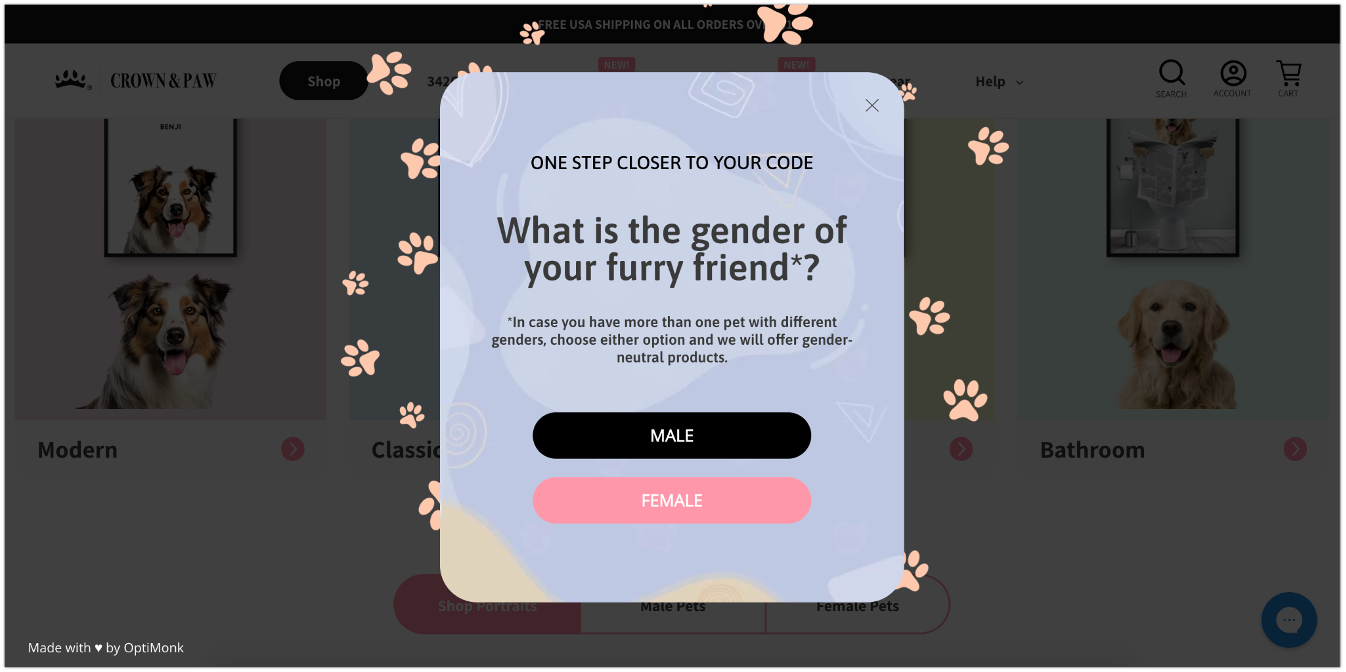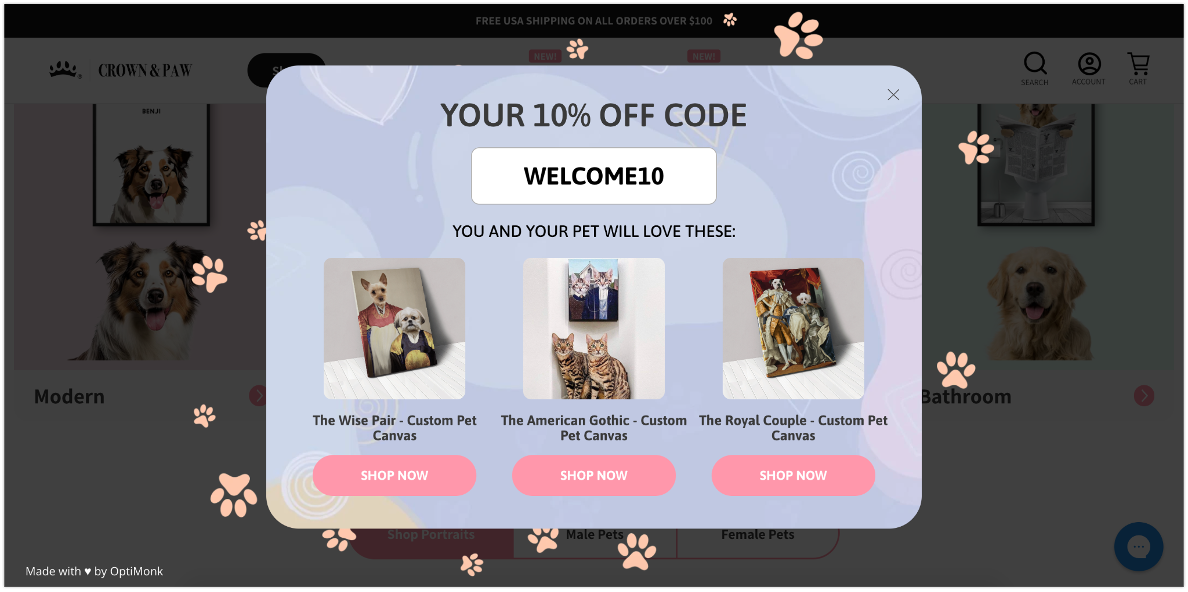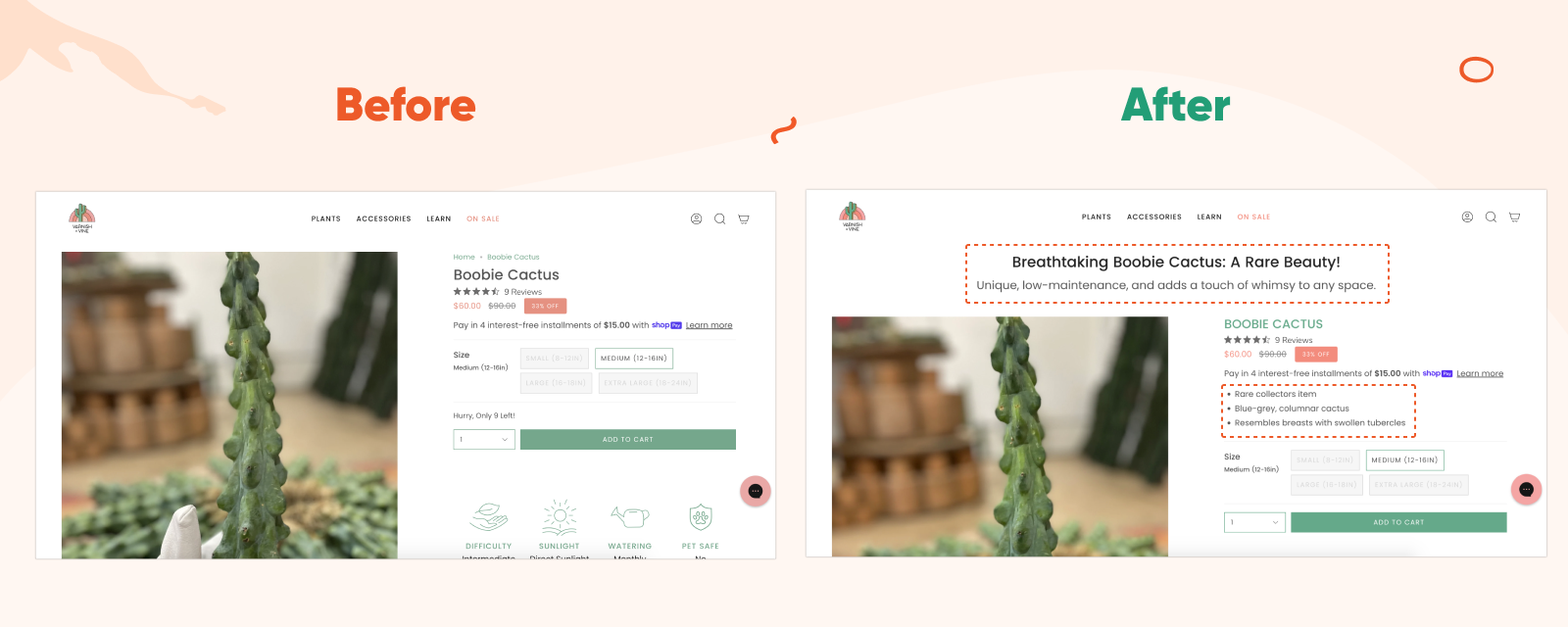Conversion rate optimization is a vital strategy for online businesses looking to grow sustainably, and we write a lot about CRO on this blog.
We understand that not everyone has the time or money necessary to commit to a full conversion rate optimization strategy. If you’re running an independent online store as a side hustle or don’t have a ton of CRO know-how, it can be tough to conduct analytics, develop new campaigns, and A/B test every page on your site.
But there’s good news! Some simple ecommerce growth hacks can help you increase your conversion rate, total sales, and revenue—without using advanced CRO tactics.
In this article, we’ll go over 5 simple changes you can make to your website to convert your incoming traffic into paying customers more efficiently.
Let’s jump in!
What is growth hacking?
Growth hacking is a data-driven approach to marketing, product development, and customer acquisition that focuses on rapid experimentation and iterative improvements.
Unlike traditional marketing strategies, which often rely on large budgets and long-term marketing campaigns, growth hacking techniques prioritize agility, creativity, and resourcefulness to achieve quick and scalable results.
At its core, growth hacking revolves around the concept of growth loops – identifying key actions that drive user acquisition, engagement, and retention, and optimizing them to fuel continuous and rapid growth.
These actions can vary depending on the nature of the business but typically include activities such as viral marketing, referral programs, product optimizations, and leveraging emerging technologies.
5 ecommerce growth hacks you should test out for business growth
Now that we’ve explored the principles of growth hacking, let’s delve into five actionable growth hacking strategies.
1. Segment & subscribe visitors using a single campaign
Data is extremely valuable in today’s ecommerce world if you want to achieve business growth. However, many store owners find it challenging to collect subscriber information without sacrificing the conversion rate.
Consumers just aren’t interested in providing information to ecommerce brands… unless you can give them a very good reason.
The key to collecting customer data lies in strategically tempting your visitors with the combination of an irresistible discount and the allure of personalized product recommendations.
Clearly outlining these benefits is an attention-grabbing initial step that also sets the stage for your next move.

As your potential customers eagerly snatch up that tempting 10% off, take advantage of their engaged state by gently asking about their interests and preferences.
You should keep your questions short and simple, like the example below.

The vast majority (95%+ on average) of users who claim a discount will also answer the segmentation question that you display at this stage.
You can then show the final step to this audience who shared their preferences:

Armed with these valuable insights, you can recommend products tailored to each of your new email subscribers. And that’s not all: the data you’ve just collected gives you an incredibly effective way to segment your email list.
It’s a win-win situation that enhances both your understanding of your audience and your conversion rates.
Here are a few segmentational popup templates to get you started with this growth hacking strategy in just a few minutes:
2. Save abandoning visitors with product recommendations instead of discounts
Exit-intent popups are a popular tool among ecommerce stores for one simple reason: they’re the best way to re-engage visitors who are about to leave your page.
The conventional approach to encouraging this segment to convert involves offering discounts of 10% or more, but you can achieve even better results with a different approach.
Rather than enticing abandoning visitors with discounts, consider offering them assistance through a well-tailored exit product recommendation popup.
Displaying an exit popup suggesting related and top-selling products to a visitor can help them find products that better align with their preferences and needs. Once your visitors find the products they’re actually interested in, they’re much less likely to abandon your page.
Lammle’s tried this growth hacking strategy on their product pages and increased revenue by 23.5%!

Here are a few exit-intent popup templates to get you started:
3. Fully automate the A/B testing process
A/B testing (also known as split testing or bucket testing) allows online marketers to compare the performance of two versions of a web page or campaign. This methodology is a key CRO tactic because it can really boost your conversion rate, but it takes a lot of time and effort to do it properly.
Luckily, OptiMonk’s Smart A/B Testing tool makes A/B testing easy by automating 99% of the work that goes into ecommerce experimentation. Its cutting-edge AI technology is designed to optimize your website’s conversion rate with unprecedented efficiency.
Smart A/B Testing is a great solution for growth marketers who are tired of wasting countless hours brainstorming new A/B testing ideas, setting them up, launching multiple A/B tests manually, and then crossing their fingers in hopes that one of them will work.
Instead, the Smart A/B Testing system creates and tests different headlines, subheadlines, and other messaging to see which resonates most effectively with your audience.
This growth hack can help to quickly boost your conversion rate.
Bukvybag achieved a 45% growth in orders thanks to running A/B tests on their homepage.

4. Match your landing page messaging to your ads
Synergy between the messaging in your ad campaigns and the messaging on your landing pages is a critical factor in driving conversions.
When a potential customer lands on your website after searching on Google, you need to make sure that the content they see is relevant to what they’re interested in (i.e. what they searched for).
OptiMonk’s Smart Personalizer is an effort-free way of harmonizing your landing page messaging with your search ad copy. This innovative tool dynamically adapts your landing page content based on which ad a new visitor clicked on.
Shoprenter, a SaaS tool, used the Smart Personalizer to customize their homepage messaging for each keyword they target on Google Ads. So, people who searched for “opening an online store” and clicked on Shoprenter’s ad saw the following message:

But those who were looking for a Shopify alternative by searching for keywords that included “shopify” saw a different message:

This kind of advanced personalization can help you achieve higher conversion rates and make the most of the traffic you’re already generating.
5. Include benefit-driven copy on your product pages
We’ve found that one of the main issues with many product detail pages is the emphasis on the product’s name and technical specs in the heading. Although providing accurate product information is vital, you don’t want to overlook the persuasive power of benefit-driven copy.
In practice, this means that you don’t just want to highlight what a product is, you also need to clearly explain what it can do for the customer. Elevating your product pages with benefit-driven headlines helps you craft a narrative that resonates with your customer’s desires and needs while powering conversions.
Varnish & Vine tried this growth hack, adding a benefit-driven headline, a unique slogan for each product, and a list of main benefits.
Thanks to these changes, they saw a 12% increase in orders and an impressive 43% increase in revenue.

However, writing and adding new benefit-driven headlines for every single product page on an ecommerce store can be a time-consuming task—especially for stores that sell a lot of different products.
Luckily, OptiMonk’s AI-powered Smart Product Page Optimizer tool provides a solution. This tool automates the process of creating and implementing persuasive headlines and benefit lists without any manual effort.
After creating several different versions of benefit-driven copy for you, the Smart Product Page Optimizer will A/B test the different versions to find the optimal combination for your target audience.
Get started with the Smart Product Page Optimizer now so that you can optimize your pages for maximum impact and revenue without the manual work!
FAQ
Are growth hacking strategies suitable for all types of businesses, regardless of size or industry?
While growth hacking strategies can be applied to businesses of all sizes and industries, they are particularly well-suited for early-stage startups and small businesses looking to gain traction quickly. However, established businesses can also benefit from adopting a growth hacking mindset to revitalize growth and gain a competitive advantage in the digital age.
Can I implement growth hacking techniques even if I have limited resources and technical expertise?
Absolutely! One of the key principles of growth hacking is resourcefulness. Many growth hacks require minimal resources and can be implemented with basic technical knowledge. Additionally, there are countless online resources and tools available to help you get started with growth hacking strategies, regardless of your level of expertise.
How can I measure the success of my growth hacking efforts?
Measuring the success of your growth hacking efforts requires a combination of qualitative and quantitative metrics. KPIs such as user acquisition, engagement, retention, and conversion rate can help you evaluate the effectiveness of your growth hacking strategies. It’s also important to track specific actions or events that contribute to growth, such as referral sign-ups or viral content sharing.
Are growth hacking strategies sustainable in the long term, or do they only provide short-term gains?
While some growth hacking tactics may yield immediate results, the goal is to implement strategies that drive substantial business growth in the long term. By continuously iterating on your tactics based on data and feedback, you can adapt to changes in the market and maintain momentum over time. Additionally, building a strong foundation of loyal customers and advocates through the best growth hacking strategies can help sustain growth in the long term.
Wrapping up
Each of the different growth hacking techniques we’ve discussed in this article can bring huge boosts to the performance of your ecommerce store but require very little effort to get up and running.
That’s because they rely on OptiMonk’s out-of-the-box solutions that leverage advanced AI to create high-quality personalized messaging.
From now on, “not having the time” isn’t a reason to put off optimizing your ecommerce store and growing your business!









